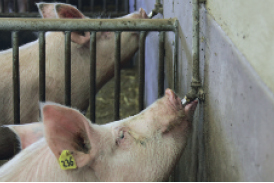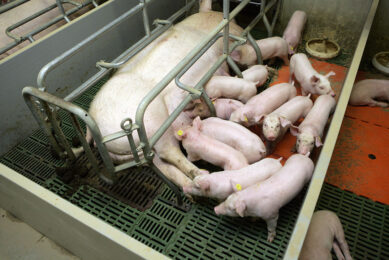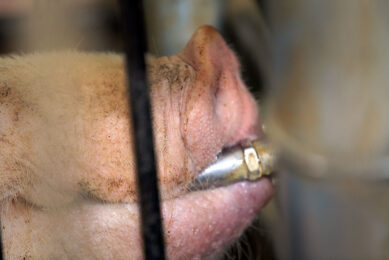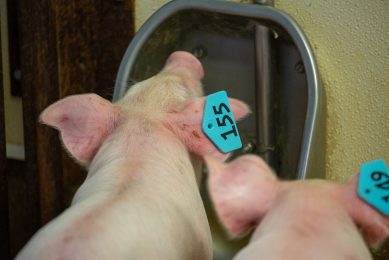Water supply crucial when purchasing nipple drinkers

Water is of great importance in the diet of animals. In addition to financial consequences for the pig farmer, water wastage negatively influences animal performance. Optimal attention, therefore, must be given to the nipple watersupply.
It is often thought that an unlimited water supply is beneficial to animal production results. This thought in itself is not strange, but more important is how the water supplied is available to the animals. As the use of nipple drinkers is more or less the norm, the water requirement of the animals and the water supply must complement one another. Therefore, it is essential to know how the optimal water supply can be achieved.
“It is a misconception to assume that a greater water supply from the nipple drinker increases animal water consumption,” says Richard Wentzel, director of Impex Barneveld. He states that an animal, as well as a person, can best satisfy its thirst by drinking the proper amount. “When you are thirsty, you do not open the tap to the maximum to satisfy your thirst. If you did so, there would be much water spillage and most likely result in a wet face and clothing,” Wentzel says. He continues, “It is better to adjust the water supply from the tap to the amount of water needed to drink without spillage. This is no different with animals. They too need a means to optimally satisfy their water requirement, and the means – nipple drinkers – must be easily accessible and supply no more water than necessary for optimal consumption and production.”
ECO regulator for pigs
Many pig nipple drinkers are known for giving a high water supply. In practice, a high water supply shows no advantage as a pig can only consume a given amount of water at a given time. Water not directly consumed by the animal is therefore wasted. Tests on most animals have determined how much water they can maximally consume.
Based on the results, Impex has introduced recent product innovations. The presentation of the Impex ECO regulator during the EuroTier 2010 is an example and was honoured with a silver medal. There are three types of the ECO regulator that meet the specific optimal water supply requirements of the DLG (German Agricultural Society), which are 0.4-0.6 l/min for piglets, 0.8-1.0 l/min for fatteners and 2.0-2.7 l/min for farrowing sows.The secret of this new nipple drinker, according to Wentzel, lies in the orifice, which, regardless of the input of water pressure, gives the desired optimal and constant water supply from the first to the last nipple drinker in the entire house. This independency of the water supply from the often irregular water input pressure in pig houses is a unique feature. The ECO regulator can be mounted to all standard pig nipple drinkers to minimise water spillage, thereby being economical and environmentally friendly.
Pay attention to water supply
In the past, pigs drank water from open systems, such as water troughs. Switching from these systems to nipple drinkers required an essential change in thought about the amount of water given to the animals.
“Throughout the world many pig farmers assume that the water supply from nipple drinkers must be used to the maximum with all the consequences,” Wentzel says. His advise therefore is to pay more attention to the water requirement and intake capacity of the animal, which provides the optimal use of the water so that less water is wasted.











